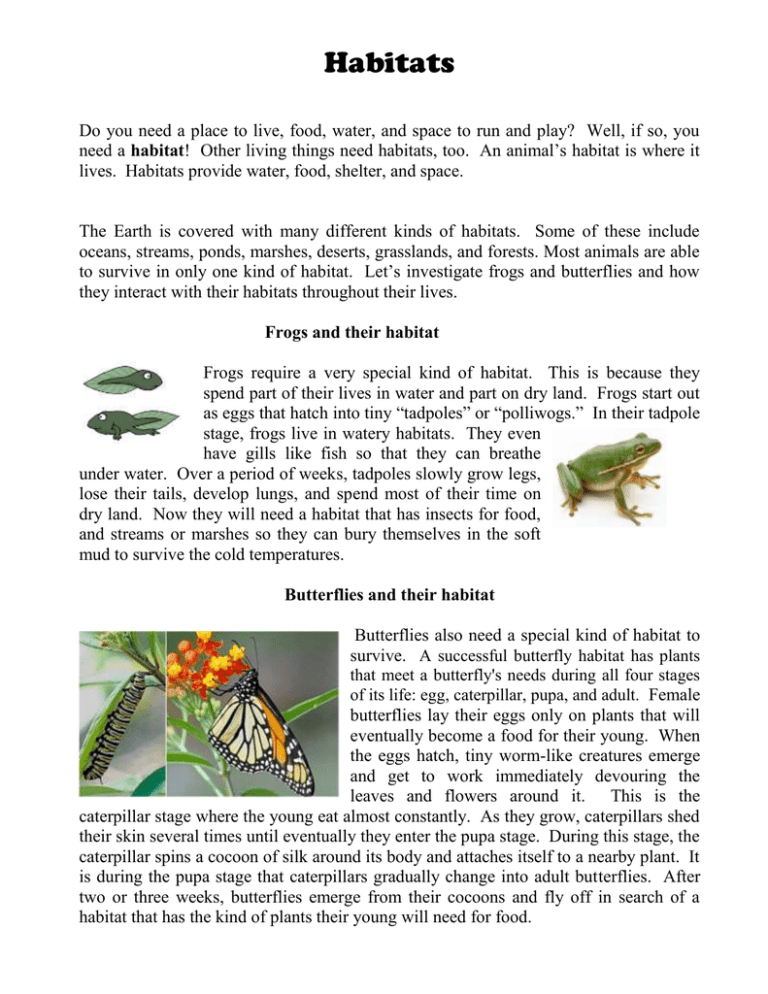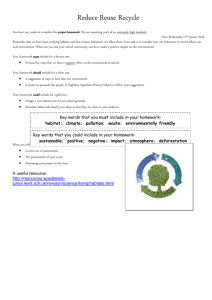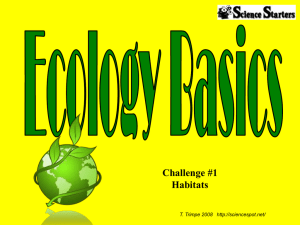Habitats
advertisement

Habitats Do you need a place to live, food, water, and space to run and play? Well, if so, you need a habitat! Other living things need habitats, too. An animal’s habitat is where it lives. Habitats provide water, food, shelter, and space. The Earth is covered with many different kinds of habitats. Some of these include oceans, streams, ponds, marshes, deserts, grasslands, and forests. Most animals are able to survive in only one kind of habitat. Let’s investigate frogs and butterflies and how they interact with their habitats throughout their lives. Frogs and their habitat Frogs require a very special kind of habitat. This is because they spend part of their lives in water and part on dry land. Frogs start out as eggs that hatch into tiny “tadpoles” or “polliwogs.” In their tadpole stage, frogs live in watery habitats. They even have gills like fish so that they can breathe under water. Over a period of weeks, tadpoles slowly grow legs, lose their tails, develop lungs, and spend most of their time on dry land. Now they will need a habitat that has insects for food, and streams or marshes so they can bury themselves in the soft mud to survive the cold temperatures. Butterflies and their habitat Butterflies also need a special kind of habitat to survive. A successful butterfly habitat has plants that meet a butterfly's needs during all four stages of its life: egg, caterpillar, pupa, and adult. Female butterflies lay their eggs only on plants that will eventually become a food for their young. When the eggs hatch, tiny worm-like creatures emerge and get to work immediately devouring the leaves and flowers around it. This is the caterpillar stage where the young eat almost constantly. As they grow, caterpillars shed their skin several times until eventually they enter the pupa stage. During this stage, the caterpillar spins a cocoon of silk around its body and attaches itself to a nearby plant. It is during the pupa stage that caterpillars gradually change into adult butterflies. After two or three weeks, butterflies emerge from their cocoons and fly off in search of a habitat that has the kind of plants their young will need for food.






